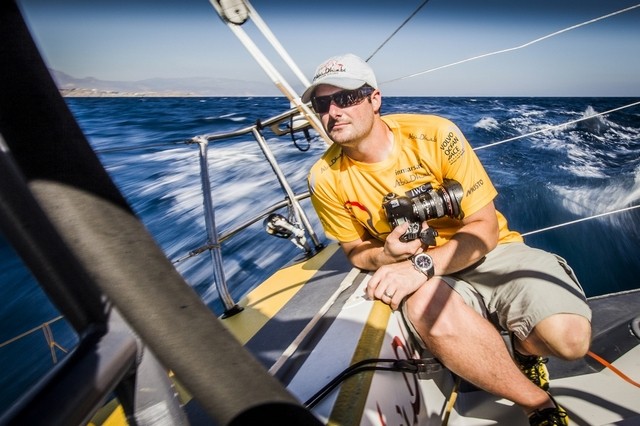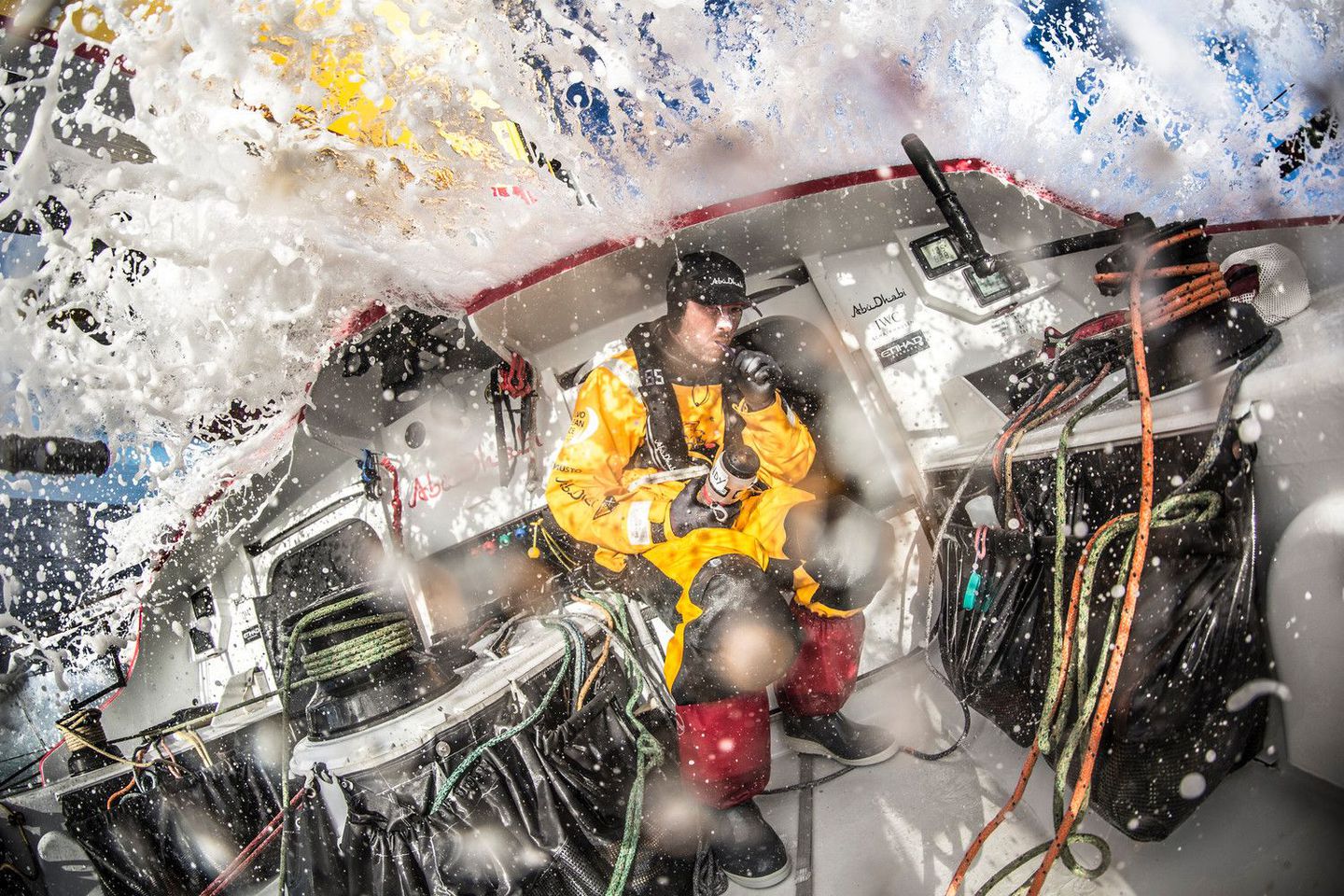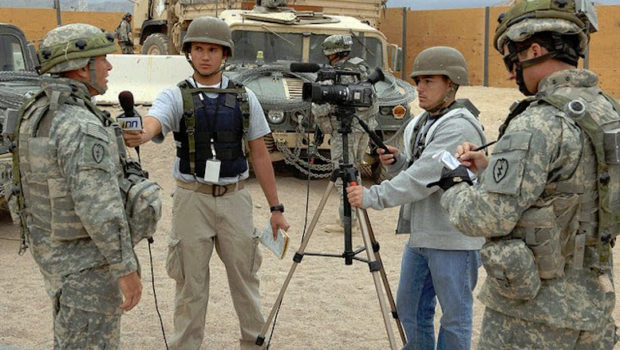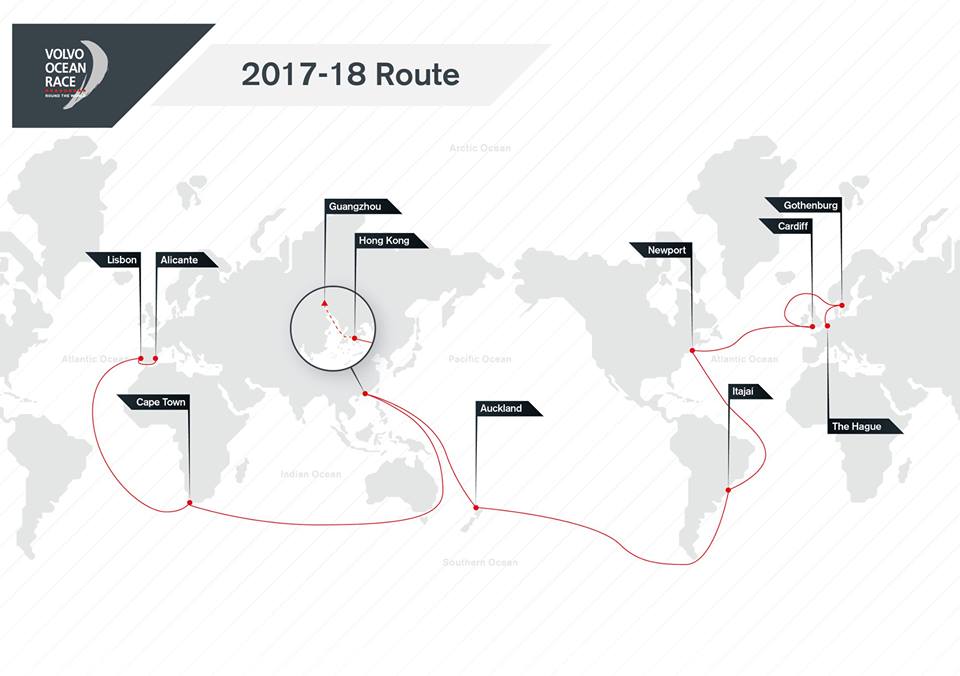New Plan for Onboard Reporting during Volvo Ocean Race
Published on October 20th, 2016
Alicante, Spain (October 20, 2016) – The Volvo Ocean Race is reinventing its unique Onboard Reporter (OBR) programme in order to tell more of the raw story than ever before – with the Race creating a squad of multimedia reporters able to work across the fleet instead of necessarily being permanently attached to individual teams.
For the 2017-18 race, the team of 10 to 12 OBRs will be more fluid and flexible, potentially being able to embed within teams on a leg-by-leg basis instead of one person signing on with one team for the whole race as before. This new approach will avoid the very late OBR appointments by many of the teams in the last edition, which compromised the technical abilities in some cases.
“We’re putting the emphasis firmly on the Reporting side of the OBR’s role, and we are already up and running with the trialing and training as a result of being able to move forward now,” said Volvo Ocean Race CEO Mark Turner.
“The quality of OBR we believe we can acquire by doing this will also help in what of course is a difficult task of balancing integrity and acquiring sufficient trust of the sailors – like a war reporter jumping in the front line with the soldiers. We actually experienced, for unfortunate reasons in fact, having more than one style of OBR in the last race onboard Dongfeng and it worked very well.
“Having dedicated reporters onboard the boats, embedded in the action, was a groundbreaking step when it was first introduced back in the 2008-09 edition – and now it’s time for the next evolution. Their only job is to tell the team’s own story in as raw a way as possible, to share what remains just a small slice of the incredible journey of the team onboard. We probably still only share 5% today – if we could get to 15% that would be great, and we would not be digging too far into certain sensitive content that should still stay on the boat.
“It’s another part of our commitment to share just a little bit more of the raw and direct story of the teams, and faster than ever before – whilst of course being sensitive to the personal stories onboard. Just like in any professional sport today, this balance is important.”

Matt Knighton of Abu Dhabi Ocean Racing who won the Inmarsat Onboard Reporter (OBR) Award for the Volvo Ocean Race 2014-15, celebrating the most challenging sports journalism job in the world.
According to Volvo Ocean Race’s Head of TV, Leon Sefton, this is a fundamental shift in the way that content is gathered onboard.
“It’s true that the OBRs will not be able to create the sort of long term bond with their teams that they may have done in previous editions, and we could lose some of the storytelling opportunities that are provided by that kind of relationship,” he explained. “But we believe that the ability to rotate the OBRs this way will provide a crucial distance between the teams and the OBRs that will better enable them to properly perform the role of observational journalist.”
Sefton added: “We’ve already begun the process of trialing and training OBRs, and by the start of the Race, we’ll have a pool of top storytellers across the fleet. Of course, this news doesn’t mean that we will rotate all Onboard Reporters, every single leg – if there’s a particularly interesting story or relationship on a particular boat then of course it would make sense to let it play out for multiple legs – but this added flexibility gives us the opportunity to shake things up if we feel it’s necessary.”
No OBR will be on the race unless their basic safety and ability to survive onboard the Volvo Ocean 65s has been well tested pre-race and signed off by at least two skippers. The ambition is in fact for the whole pool of OBRs to actually train on any of the boats to which they might be assigned during the race itself.
Teams have been capturing footage since the first edition of the race in 1973-74 – but originally crew members would take turns to perform reporter duties, using 16mm film cameras and homemade water housings.
Full-time Media Crew Members were added to each team in 2008-09 as dedicated story-gatherers, and the role was renamed as Onboard Reporter for the 2014-15 edition. The news of the changes follows a prominent campaign to recruit the next reporters to the storytelling squad, which closed in September.

During the 2014-15 race. ©Matt Knighton / Abu Dhabi Ocean Racing
“We’ve raised the bar in terms of our search for the next generation of Onboard Reporters ahead of 2017-18,” added Turner. “We’ve received applications from 126 countries and the quality is incredible, with experienced media professionals including war reporters, adventure and nature documentary makers and digital broadcast journalists.”
The Volvo Ocean 65 racing boats are effectively mobile digital production facilities, operating with state-of-the-art satellite hardware and services supplied by Cobham SATCOM and Inmarsat.
As part of a refit process currently underway at the Race’s Boatyard facility in Lisbon, all Volvo Ocean 65s are gaining two new fixed camera angles, taking the total to six positions across the boat.
Each Onboard Reporter has additional access to night vision and action cameras, while drone and 360-degree cameras will also be in regular use across the fleet.
“We were the first to use drones from the oceans as part of our storytelling in 2014-15, and led the way with 360-degree footage offshore, as well as streaming live during the Cape Horn rounding,” said Sefton. “We’re going to continue innovating across the OBR programme.
“Thanks to our partners we have the ability to go live from anywhere on the planet, at any time, and the OBRs work around the clock to capture and transmit the real story from the boats. As soon as it’s sent, you’ll see it.”
Background: Racing the one design Volvo Ocean 65, the 2017-18 Volvo Ocean Race begins in Alicante, Spain in October 2017 with the final finish in The Hague, Netherlands in June 2018. The race visits 11 cities across five continents. The full fleet has yet to be announced but there expects to be a minimum of 7 teams with a possibility of 1 or 2 more.
Race details – Race route – Facebook
Source: Volvo Ocean Race










 We’ll keep your information safe.
We’ll keep your information safe.